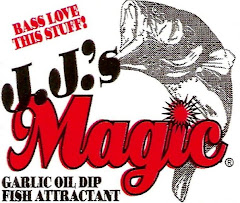I was sitting at my work bench making a few soft plastic lures, thinking about why certain lures catch fish. Is it color, size, action, texture (softness, fine appendages or grain), scent, natural appearence, vibration or a combination of all or any of them? If so, WHY?
Then it occurred to me that of the hundreds of plastics I've bought or made that have worked at one time or other have something that fish notice, become curious about and eventually decide to eat. You can see what I'm talking about on YouTube from the many underwater videos using AquaView.
First of all, artificial baits rarely have to be a detailed copy of the real thing to catch fish. For example Mad Man Craws never out produce a skirted jig and trailer , and they are exact copies of crawfish!
Scent is 50/50 as a factor. I know that after one fish hits a live worm, others soon come around. Is it the bait or something about the turned-on fish that infects other nearby fish to higher aggression levels, regardless of species? A YouTube video demonstrated one perch going after a salted minnow and soon half a dozen others joined in. Some may insist the salt is a factor, but I've disproven that time after time using salted and unsalted plastics.
That leaves the other things - size, action, appearence (color), texture and vibration.
When a company markets a new lure, the hype is usually about how natural the bait is or what it represents to a fish. If fish could speak English, I doubt we could understand it or come away satisfied with why fish hit artificials. Nature is somewhat random and generalities are all we have to go by, therefore, I chose to go with CONTRAST as the most applicable generalization of why all fish bite lures.
Fish feel a lures presence with it's lateral line and can locate prey with it in the dark or in muddy water.A proven FACT! The lateral line indicates size, speed, direction and action of whatever swims within range, similar to SONAR, but more advanced. Sight does not produce 3D images, but one eye and the lateral line do so combined. The closer in proximity a fish is to a lure, the more both work together to feel it and evaluate it as a food source.
Active fish aren't chossy (most of the time), so why would a food-bloated or semi active fish eat a lure? .... LURE CONTRAST and the fish's nature combined.
BY: Gordon Holman
Subscribe to:
Post Comments (Atom)










No comments:
Post a Comment